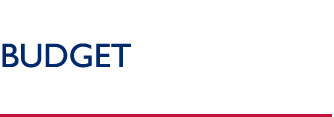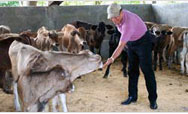 |
|
 |
 |
|
 |
 |
 |
USAID Information:
External Links:
|
|
 |
 |
|
 |
 |
|
Mexico


Please note: All linked documents are in PDF format
| Objective |
SO Number |
FY 2004 |
FY 2005 |
FY 2006 |
| Microenterprise |
523-009 |
230 |
|
|
| Training, Internships, Education and Scholarships |
523-010 |
7,952 |
6,035 |
7,100 |
| Ruling Justly |
523-021 |
9,988 |
13,530 |
11,234 |
| Economic Freedom |
523-022 |
10,544 |
8,604 |
9,374 |
| Investing in People |
523-023 |
3,700 |
3,164 |
3,230 |
| Total (in thousands of dollars) |
32,414 |
31,333 |
30,938 |
|
The Development Challenge: Since events in Mexico have a more direct, daily impact on U.S. citizens than events in any other country in the region, the relationship between the United States and Mexico is especially important. An authentic partnership exists between the United States and Mexico based on the many things held in common. These include: a 2,000-mile border with its migration, crime, security, resource management, and trade issues; interdependence of economic, environmental, and health concerns; domestic a common social heritage; and shared concern that the citizens of both countries benefit from economic opportunity and growth. The U.S. Government has a direct interest in working with Mexico to address these common concerns.
It is in the United States' interest to work with Mexico on its economic and political reform agendas, given Mexico's close proximity, its geopolitical importance in the region, and Mexican migration to the United States. The two countries share a frontier that has on average more than one million border crossings per day. Several U.S. and Mexican industries (particularly automotive and electronics) have closely linked production chains, many U.S. businesses remain dependent on an influx of Mexican migrant labor, and many Mexican firms are highly dependent on U.S. technology and the U.S. market.
Since the signing of the North American Free Trade Agreement (NAFTA) in 1994, Mexico has become the second largest trading partner of the United States, and is among the top ten export markets for 43 states. As President Bush said in 2001 and reiterated in early May 2002, "... NAFTA is a recognition that the United States has no more important relationship in the world than the one we have with Mexico . . . Good neighbors work together and benefit from each other's successes..."
In 2002 with a population of more than 100 million, the Government of Mexico (GOM) estimated gross domestic product (GDP) per capita at $6,884. However, not all Mexicans are reaping the benefits that this extensive trade, international visibility, and close U.S. partnership might offer. About 53% of all Mexicans--over 50 million people--had an annual income of less than $720.
The election of President Vicente Fox in July 2000 began a new era for Mexico, ending 71 years of one-party rule. Since taking office, the Fox Administration has initiated a number of promising programs to reduce poverty, improve accountability and governance, protect natural resources, and expand the benefits of trade to more Mexicans. President Fox's term will end in late 2006 and already the next presidential election process is underway. Despite the political posturing and gridlock occurring at the federal level, Mexican state governments across party lines are increasing reform efforts and requesting assistance from USAID. Mexican states are now providing another avenue for reform in Mexico, and are offering the potential for direct, positive change in the lives of Mexicans.
The USAID Program: USAID's program works with Mexico to address shared development problems. A common U.S.-Mexico development agenda has emerged that includes: 1) promoting environmental protection, alternative energy and ecotourism; 2) improving public administration, transparency and accountability; 3) broadening microfinance and remittance utilization; 4) preventing infectious diseases, and 5) furthering higher education and competitiveness. In FY 2004, the USAID program in Mexico transitioned to a new Regional Strategy for Central America and Mexico (CAM). Under its new strategy, USAID's bilateral program in Mexico has areas of focus in line with MCA goals: 1) economic freedom through activities to increase access to finance and improving natural resources management; 2) ruling justly through activities in accountable governance and rule of law, and 3) investing in people by improving the health of Mexicans through work in infectious disease prevention and control and educational exchanges and scholarships.
The new USAID program in Mexico contributes significantly to the bilateral Bush-Fox Partnership for Prosperity to stimulate private investment. USAID's scholarship and exchange program will enhance the capacity of higher education institutions in the United States and Mexico to examine development problems, and will provide greater opportunities for Mexicans in poor, rural, and indigenous areas. USAID will also address natural resource conservation in key watersheds and biodiversity sites and generate new sources of income for rural farmers and inhabitants. USAID's microfinance program will work with credit unions, private banks, and associations to facilitate lower-cost remittance transfers from the United States to Mexico and encourage savings and investment by Mexicans in both countries.
Other Program Elements: USAID's Mexico program will collaborate with USAID regionally managed activities designed to protect the Mesoamerican (Mexico and Central America) Reef and the Mesoamerican Biological Corridor, and to control wildfires in the region.
USAID will also provide technical oversight and management of a Global Development Alliance activity, the Lead Free Alliance (LFA). LFA support a public-private partnership that includes American Express and other private sector partners, international agencies, such as the United Nations Educational, Scientific, and Cultural Organization (UNESCO), and Mexican public agencies that promote handicrafts. The LFA aims to remove lead from pottery production, thereby improving its marketability and increasing income and employment opportunities for producers of traditional low-fire pottery. The program seeks to train 10,000 Mexican potters over the next two years, and expects to generate $1 million in local, regional, and export sales of lead-free pottery.
Other Donors: World Bank and the Inter-American Development Bank (IDB) are, respectively, first and second largest development assistance organizations in Mexico. World Bank's 2004 portfolio in Mexico included total commitments of $3.8 billion. World Bank's 2005-2008 Country Assistance Strategy designed in consultation with the GOM, contemplates $4.8 billion in loans over the next four years to support the GOM's commitment to reduce poverty and inequality, increase competitiveness, strengthen institutions, and promote environmental sustainability. These organizations have run into implementation delays due to the GOM requirement that its National Bank for Public Works and Services (BANABRAS) administer their funds.
IDB loans to Mexico fund approximately 30 projects centered on social sector modernization, economic integration through NAFTA and Plan Puebla-Panama, modernization of the state and lowering barriers that limit competitiveness. The North American Development Bank is providing funding to the border states (four in the United States and six in Mexico) for water, solid waste, and wastewater infrastructure development.
Japan is the third largest donor and has historically been the largest bilateral donor. It collaborates with USAID in several activities related to environment and HIV/AIDS. Smaller donors include the British Department for International Development (environment), the British Council (education and governance), Spain (microfinance and environment), France (environment), and the European Union (higher education).
The United Nations (UN) group is represented by 18 organizations in Mexico, including the Pan American Health Organization, the United Nations Development Program, the UN Environment Program, the UN Fund for Population, UNAIDS, and the UN Children's Fund.
Back to Top ^
|


